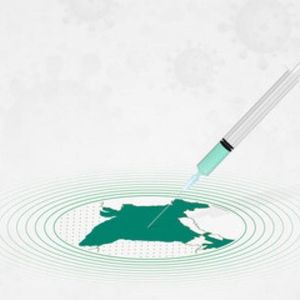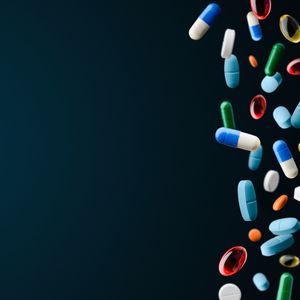

Our Review Process
Our articles undergo extensive medical review by board-certified practitioners to confirm that all factual inferences with respect to medical conditions, symptoms, treatments, and protocols are legitimate, canonical, and adhere to current guidelines and the latest discoveries. Read more.
Our Editorial Team
Shifa Fatima, MSc.
Author
Dr. Apoorva T, MHM.
MEDICAL ADVISOR
Hyperglycemia vs Hypoglycemia
Table of Contents
Hyperglycemia
Hyperglycemia or high blood glucose means excessive amounts of blood sugar in the bloodstream, and this condition is associated with diabetes. It is caused due to the lack of insulin in the body or when the insulin is not functioning properly. Causes of high blood glucose can be excessive food intake, less physical activity, illness, and stress. It is crucial to diagnose and treat this medical condition before it becomes too severe and causes complications. One way to keep it in check is by regularly testing the blood glucose levels in diabetic patients. Also know can diabetes be reversed.
Symptoms
The normal blood glucose levels in a body range from 80 to 130 mg/dL. Levels of sugar in the blood that are higher than this range indicate hyperglycemia, but the symptoms are not visible until after a few weeks. They slowly develop when the levels increase to 180 to 200 mg/dL.
Early signs and symptoms:
- Frequent urination
- Increased thirst
- Blurred vision
- Fatigue
- Headache
- Sores that won’t heal
If hyperglycemia is left untreated, it may cause some serious complications like ketoacidosis, which is the accumulation of toxic ketones in the body. The symptoms associated with this condition include:
- Fruity-smelling breath
- Nausea and vomiting
- Shortness of breath
- Dry mouth
- Weakness
- Confusion
- Coma
- Abdominal pain
Long-term severe effects are eye, kidney, cardiovascular diseases, and sometimes even nerve damage. Read more about the high blood sugar level.
Prevention
Hyperglycemia can be prevented by
- Checking food intake
- Increasing physical activity
- Reducing stress
- Timely intake of diabetic medication
Also read about how to cure diabetes permanently.
Hypoglycemia
Hypoglycemia, commonly known as low blood sugar, is a condition wherein the blood glucose drops below normal levels. It usually occurs in diabetic patients who take insulin medication. Apart from taking too much insulin, the other reasons blood glucose can dip to alarming levels are exercising too much, not eating enough, or skipping meals.
It is considered to be hypoglycemia when blood glucose levels fall below 70 mg/dL, and at this point, the primary functions in the body start deteriorating. As a short-term solution, the liver can produce glucose or convert stored glycogen into glucose. But these solutions can have adverse effects on the body.
Low blood glucose is commonly seen among Type I and Type 2 diabetic patients who take insulin medication. Know about high blood sugar level. Also read about sugar in urine.
Symptoms
Symptoms of this condition tend to appear suddenly and vary from person to person. The symptoms include:
- Pale skin
- Blurry vision
- Dizziness
- Rapid heartbeat
- Sudden mood changes and nervousness
- Fatigue
- Headache
- Hunger
- Shaking
- Sweating
- Difficulty sleeping
- Skin tingling
- Trouble thinking clearly or concentrating
- Loss of consciousness, seizure, coma
People who have hypoglycemia are often not aware of their condition and when the blood glucose levels drop without notice, the absence of immediate treatment can lead to the patients fainting, experiencing a seizure, or going into a coma.
Low blood glucose is a medical emergency and, if you know someone who is experiencing symptoms, you can help them by having them eat or drink some form of carbohydrates. If this doesn’t work and the symptoms are severe, then administer a shot of glucagon immediately. Read more about medications for diabetes.
Prevention
You can prevent hypoglycemia by
- Not consuming diabetic medications that lower blood glucose levels too much
- Eating regular and healthy meals
- Keeping physical activity in check
- Keeping a source of sugar handy at all times
Experiencing symptoms of high or low blood sugar? Consult a doctor immediately.
FAQs
1. How can you tell the difference between hyperglycemia and hypoglycemia?
Hyperglycemia and hypoglycemia have very different causes and symptoms that make it easy for us to differentiate between the two. Hyperglycemia is caused due to excessive intake of food, less physical activity and stress, and shows signs of increased hunger, thirst, fatigue, urination and blurred vision.
Hypoglycemia is caused by less intake of food, excessive exercise and blood glucose-lowering medications. Symptoms are sweating, dizziness, nervousness, anxiety and needs immediate intervention.
2. How do you remember hypoglycemia and hyperglycemia?
One way to effectively remember the different mnemonics is:
- hyperglycemic patients are hot and dry, sugar high.
- hypoglycemic patients are cold and clammy, and they need candy.
3. What are the three signs of hyperglycemia?
Hyperglycemia has distinct symptoms that can be treated successfully if caught early on. The three main signs of high blood glucose are:
- Polyphagia: Feeling hungry all the time because the body senses the cells are not getting enough sugar and triggers hunger
- Polyuria: Frequent urination, especially at night because the body tries to flush out the extra sugar intake
- Polydipsia: Increased thirst due to dehydration from urinating a lot. Read more about diabetes causes.
4. Which is worse, hypoglycemia or hyperglycemia?
While both conditions deteriorate the health of an individual, hypoglycemia is considered to be more dangerous than hyperglycemia. This is because when a person has low blood glucose, the brain cells stop working completely and a person can even slip into a coma. Therefore, immediate intervention is required.
References
- https://www.ncbi.nlm.nih.gov/books/NBK279340/
Disclaimer
This website's content is provided only for educational reasons and is not meant to be a replacement for professional medical advice. Due to individual differences, the reader should contact their physician to decide whether the material is applicable to their case.
More by Shifa Fathima

अर्जुनरिष्ट के फायदे, खुराक और नुक्सान

मधुमेह के लिए मधुनाशिनी वटी: उपयोग, लाभ, खुराक और दुष्प्रभाव|

मधुमेह को नियंत्रित करें भारतीय आहार से




